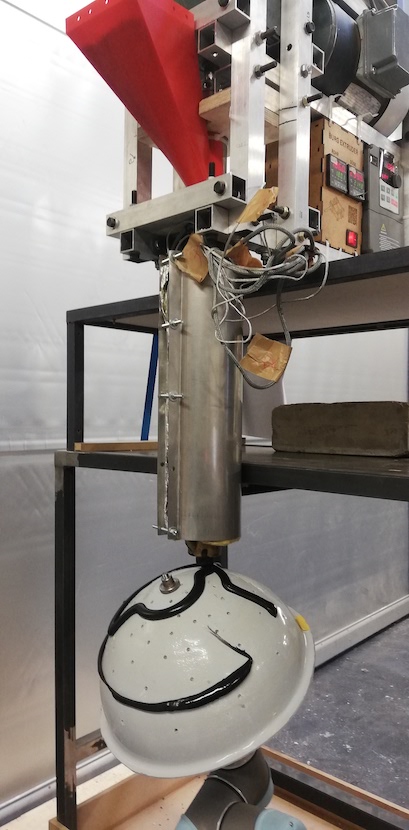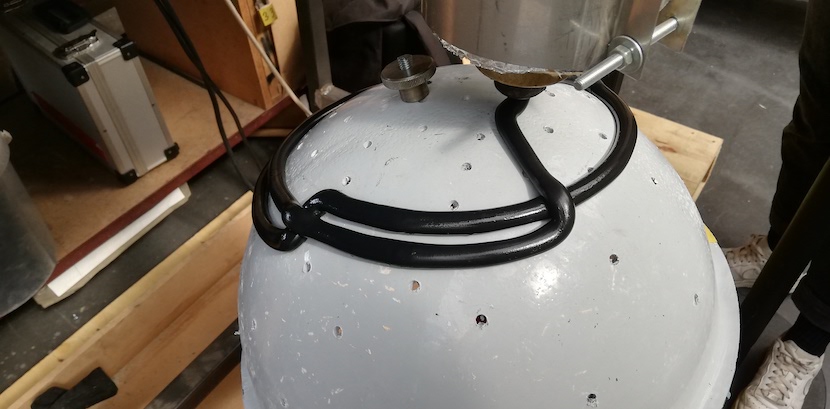Thermoplastic shape-winding is a method of creating 3D objects by extruding thermoplastic onto a base form wich is moved by a 6-axis robot. The project aimed to find ways of quickly generating threedimensional structures without the need for layer by layer extrusion.
click the image below for a video demonstration:

- Rhino 6 (tested in Rhino 6 for Windows)
- Grasshopper(included in Rhino 6)
Required Grasshopper Plugins:
- visose/Robots
- Make sure you install a robot library that has a UR5 such as KU-Leuven
- treesloth
In order to actually extrude thermoplastics you will of course also need:
- Universal Robot UR5 or any industrial robot supported in visose/robots (tested on a UR5 CB)
- Thermoplastic extruder
- a common 3D-printing hotend could be enough for small-scale tests
- the extruder used here is adapted from the precious-plastic extruder
simply clone or download the project folder and open one of the files in the "Grasshopper_definitions"- folder
2D shape generation with a randomized algorithm:
Projecting the generated shape onto the 3D base form:
Optimising the extrusion angle onto the base form (this is currently done manually):
Simulating the extrusion process:
- Currently, the method relies on manual adjustment of the parameters (especially robot orientation) and input-curves in order to prevent the robot from reaching its joint-limits. This step could be done algorithmically, both to find the optimal starting configuration and rotation for the robot as well as constraining the shape-generation method to prevent it from creating impossible shapes.
- The non-spherical wrist of a Universal-Robot causes considerable speed constraints when performing certain movements. A robot with a spherical wrist would have less of these constraints As the speed of the robot is currently not linked to the extrusion speed this severely impacts the uniformity of the resulting extrusion line. This can be seen in this video.
- No automated collision avoidance is implemented as of yet
Apart from the current shortcomings of the method itself the following aspects were challenging during the time of developing the project and contributed to the limited scope of the results:
- Unreliable extrusion: The extrusion was unreliable due the motor controller limiting the current of the extruder motor under high load as well as the recycled, shredded material not flowing well into the extrusion chamber. A different combination of motor and controller as well an improved funnel geometry for material flow should solve these problems.
The code and documentation (text and images) are licensed under the MIT-License You are free to share and redistribute the material as well as adapt and transform it (even commercially), however there is no warranty or liability on the part of the creator.
If you use this code directly or as an inspiration for your own project, let me know. I am very interested in seeing where this method could lead.






